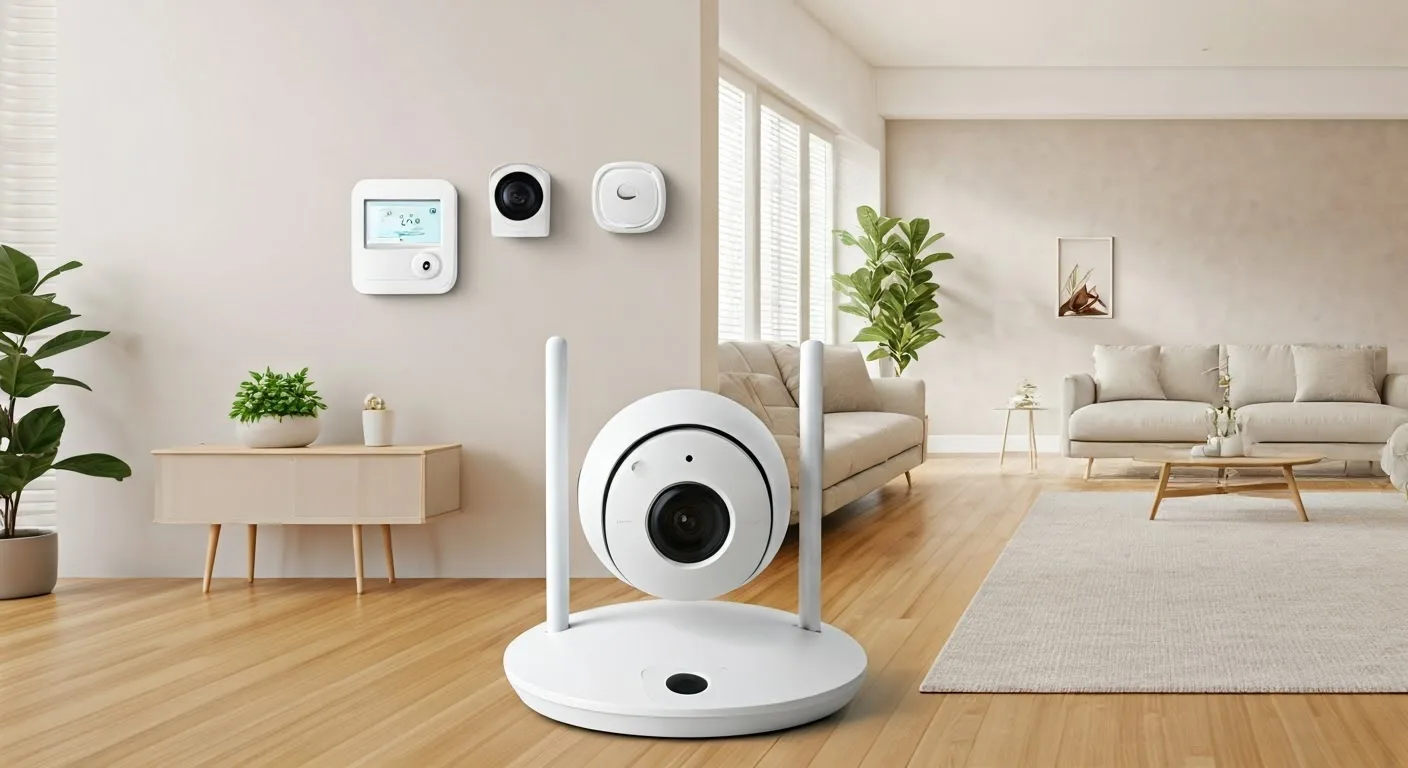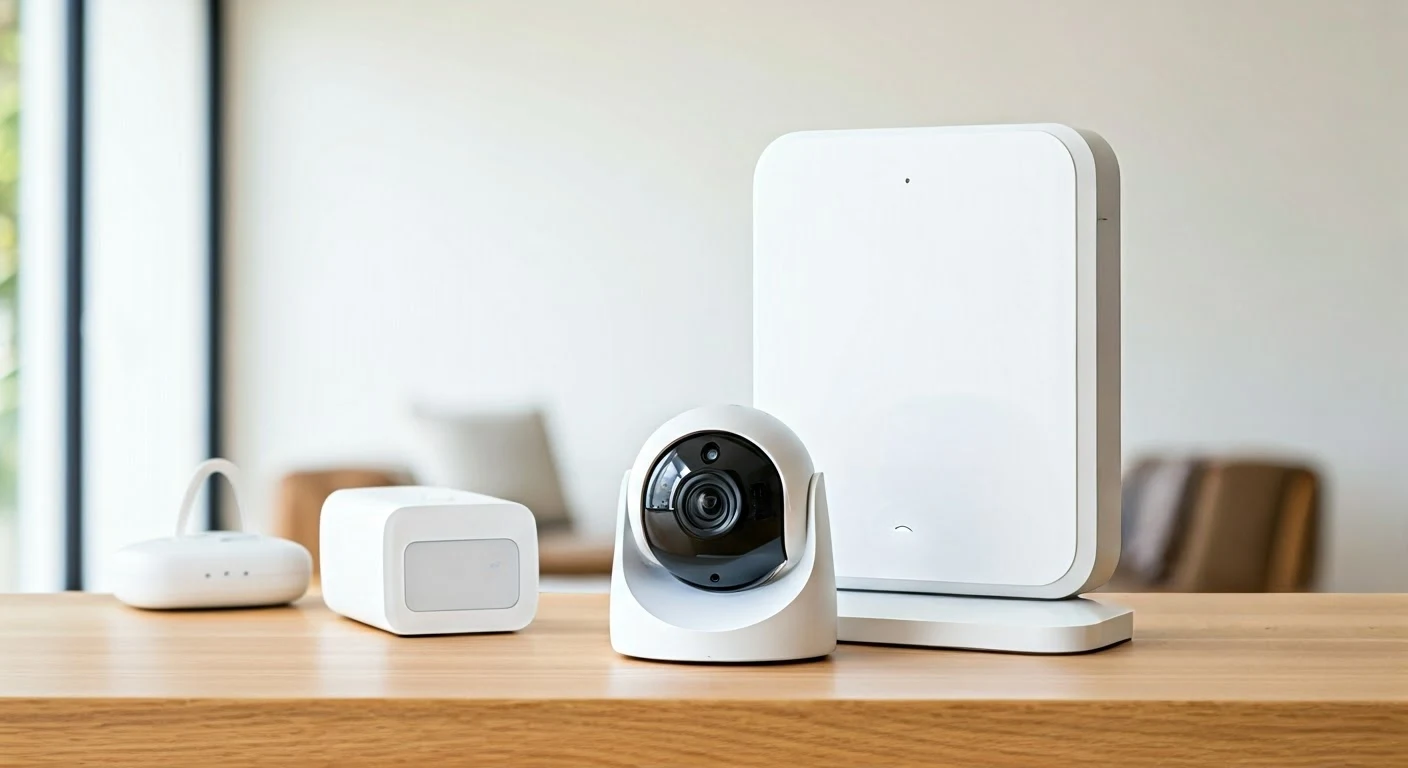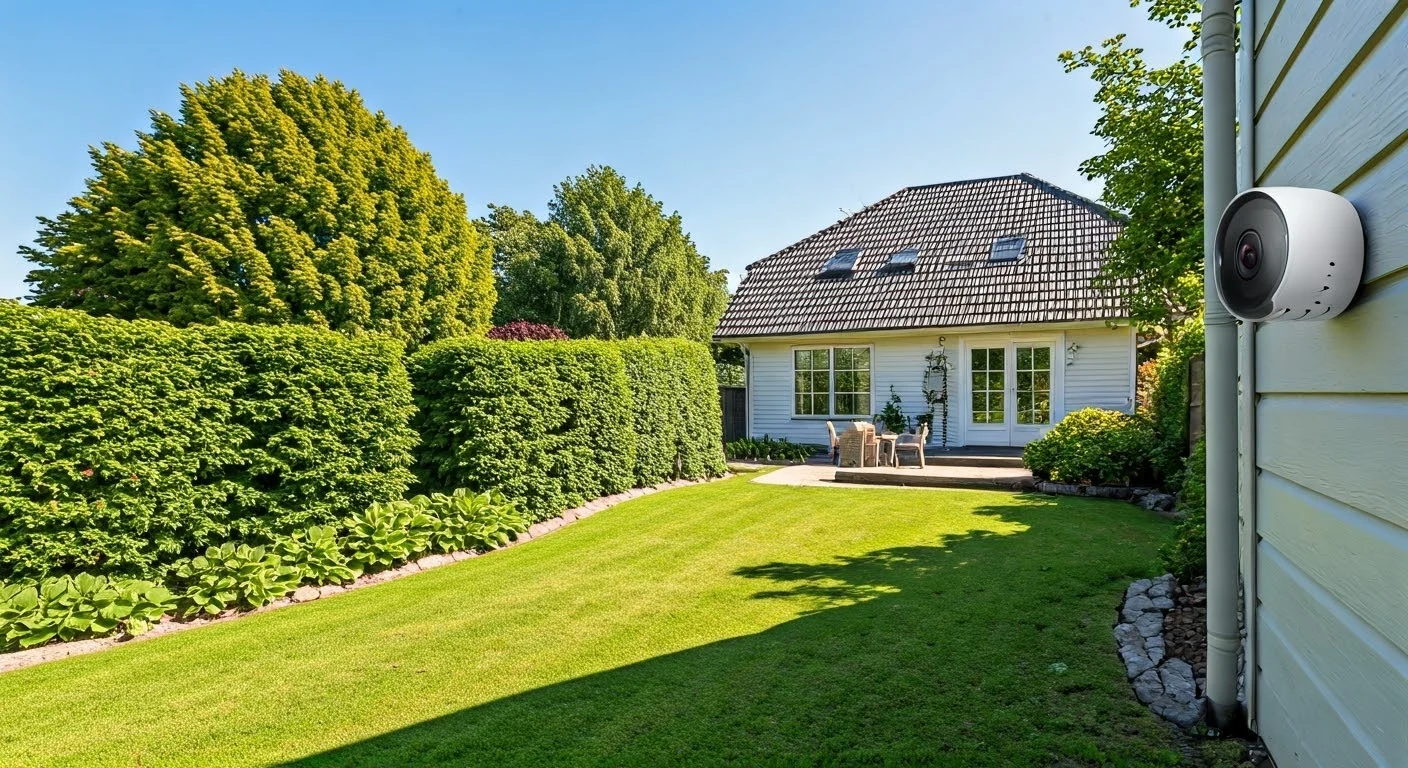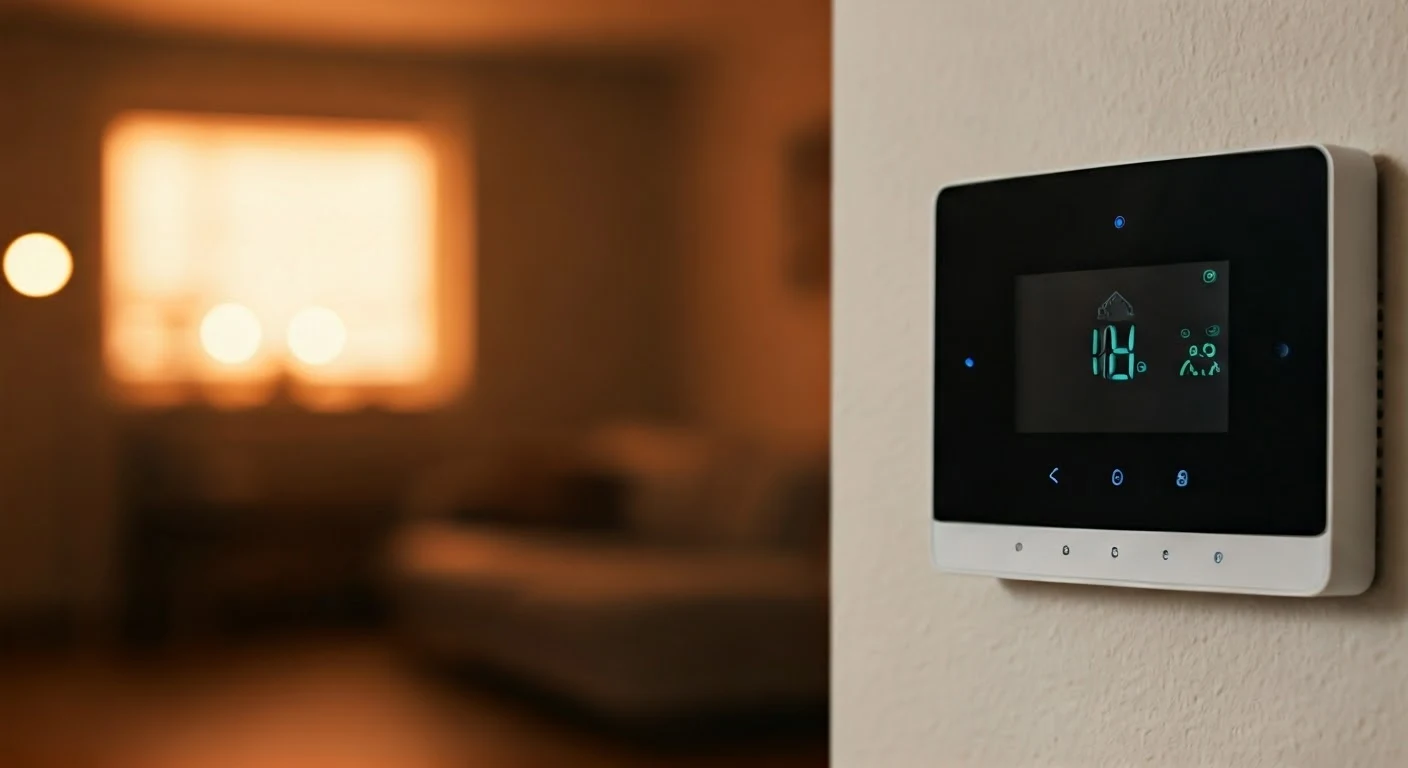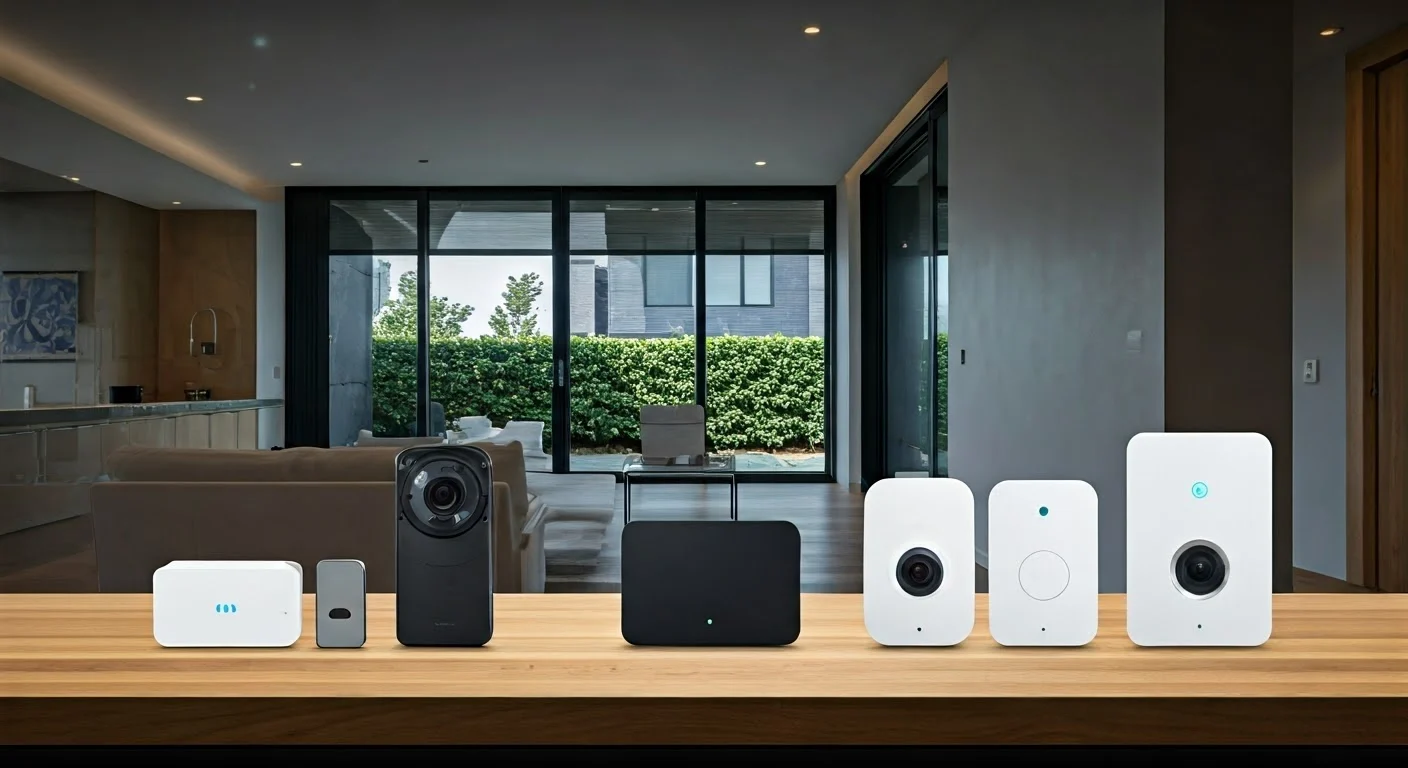A smart home is more than just easy living; it focuses on your safety. The main part of this is smart home security. This is a smart system made up of connected devices that work well together to protect your home. This blog will help you pick the right smart home security system that fits your needs.
Understanding Smart Home Security Systems
Smart home security systems are a new and improved way to protect your home with a home security camera. Picture a system where sensors, cameras, and alarms work together and can be controlled from your phone. That’s what smart home security is all about!
These smart-systems send you push notifications and alerts in real time. This means you can keep an eye on your home from anywhere. They cover all aspects of safety, from detecting break-ins to checking the environment. Plus, they work well with other smart home features.
The Evolution of Home Security in the Digital Age
The digital age has changed home security in a big way. It has moved past old alarm systems and brought in better features and more control for homeowners.
Bulky keypads and basic functions are no more. Smart security systems now have modern designs, settings you can adjust, and remote access through easy-to-use mobile apps.
Whether you want a simple setup you do yourself or a system monitored by professionals, you have many choices. The digital age provides different options for every budget and needs, making sure your home has the best protection technology.
Key Components of a Smart Home Security System
At the center of every smart home security system is a comprehensive system base station. This central hub connects all parts of your system and helps them work together smoothly.
Motion sensors are important for spotting any strange activity in or around your home. They work like watchful guards that send alerts when they detect movement in certain areas. Security cameras give you a way to see what is happening, even when you are not there.
Video doorbells improve security at your entry points. They are a mix of convenience and safety. You can see and talk to visitors from anywhere. This can help scare off potential threats and keep a record of what happens at your door.
Top Picks for Smart Home Security Systems in 2025
Navigating smart home security systems can feel confusing. There are many options available, so it's important to make smart choices based on what you need and how much you want to spend.
Whether you want a detailed look at the top systems or wish to know the unique features of each one, this section will help you feel sure about keeping your home safe.
Comprehensive Review of Market Leaders
Several companies are leaders in the market for smart security systems. They deliver high-quality products and have built their good name by being reliable and innovative. They focus on protecting homes well.
Some of these well-known brands are SimpliSafe, ADT, and Ring. SimpliSafe is famous for its easy-to-use DIY systems and flexible monitoring plans. ADT has been a leader in professional monitoring for a long time, especially with its ADT system. Ring is popular for its wide range of security devices and how easily they work together.
When picking a top brand, it's important to think about things like professional monitoring options, contract terms, and the variety of devices available. Looking at these points will help you find a system that meets your needs and priorities.
Highlighting Unique Features and Technologies
Smart home security systems are always changing. They now come with new features and AI tools that make home protection better. For example, facial recognition helps these systems tell the difference between familiar faces and possible intruders.
Smart locks are now a part of many security systems. They allow keyless entry and you can control them from anywhere, making life easier and safer. AI tools look at data from different sensors. They help spot unusual activity and can warn us about potential risks before they happen.
Here are some cool features you might find:
- Customizable Activity Zones: You can choose specific areas for motion detection. This helps reduce false alarms and fits your home’s layout better.
- Environmental Monitoring: Get alerts if there are dangers like smoke, carbon monoxide, or water leaks. This helps keep you and your family safe.
- Two-Way Audio Communication: You can speak with anyone at your door through your security system, even when you are not at home.
How to Choose the Right Smart Home Security System for Your Home
Choosing the right smart home security system is a personal process. What works well for one home may not be right for another. Before you start looking at different options, it's important to understand what your home needs.
First, review your current security setup and find any weak spots. Then, think about your daily life, budget, and how much automation you want. Make sure the system you pick fits your needs.
Assessing Your Home's Security Needs
Start by walking around your property. Look inside and outside. Find places where someone could enter—like doors, windows, and garages. Also, think about other areas that may need more security, such as basements or outbuildings.
Next, consider your daily routine and any weak spots it may create. Do you travel a lot or work late hours? Do you have children or pets? Looking at these factors will help you set your security priorities. This will guide you on what types of sensors, cameras, and features you need.
For example, if you live in a dimly lit area, cameras with night vision are important. They will help you see clearly at night. Also, emergency response features are beneficial, as they have no additional fees associated with them. These include automatic calls to authorities if there is an alarm. This adds extra safety for those who want complete security solutions.
Compatibility with Existing Smart Home Devices
For homeowners using smart home devices, it is very important to make sure everything works well together. A great smart home lets all devices interact easily. This includes security systems.
Before you choose a security system, check if it will work well with your current smart home products and its smart home compatibility. If it can connect with popular systems like Google Home, Amazon Alexa, or Apple HomeKit, you can automate many things. This way, you can manage your lights, temperature, and security devices from one place.
Imagine this: when you leave for work, your security system can arm itself. At the same time, it can also tell your smart thermostat to change the temperature and your smart lights to turn on "away" mode. With these connections, home security becomes more than just separate items. It turns into a simple and smart living experience.
Installation and Setup Guide for Beginners
Installing a smart home security system can feel overwhelming, especially if you're new to technology. Luckily, today’s systems are made to be easy to set up without stress.
This part offers simple steps for beginners. You will learn how to make your home safe and connected. Don’t worry, you don’t need to be a tech expert to complete the installation.
DIY Installation Tips for Homeowners
Most DIY smart home security camera systems come with clear instructions. Many also have helpful video tutorials. Before you start the installation, make sure you know the system's parts. Plan where to put the sensors, cameras, and the base station.
Place the sensors at important spots like doors and windows. This will help you cover as much area as possible. When choosing camera locations, think about both safety and privacy. Choose angles that look at important areas but also respect personal space.
A good plan for installation is key to strong and effective smart home security. If you face any problems, most manufacturers have good customer support to help you.
When to Consider Professional Installation Services
While DIY installation can save you money, there are times when you need a professional. If your property is large or complicated, or if you don't want to manage it yourself, it's a good idea to hire a professional installer. This can help reduce stress and make sure everything works well.
Professional installers know how to manage tricky setups. They can make sure all parts are connected correctly and placed to work at their best. They also offer helpful advice based on your home's setup and security needs.
Plus, choosing professional installation usually means you get warranties and customer service. This gives you peace of mind and support if you have any problems later on.
Maximizing Your Smart Home Security
A smart home security system is more than just setting it up. It's about using it to make your home safe and connected. The secret is to blend it well with your current smart home setup.
When you connect your security system to other smart devices, you open up new ways to make your home smarter and safer. This boosts the safety and intelligence of your home significantly.
Integrating Security Systems With Smart Home Ecosystems
Imagine a world where your security system does more than protect your home. It works with your other smart devices to create a team of safety and convenience. This is what it means to have a smart home.
When you connect your security system to Google Home or Amazon Alexa, it can control and interact with compatible smart displays and devices around your house. For example, your system can disarm and unlock the front door as you arrive in the driveway. At the same time, it can adjust the thermostat and turn on the lights to greet you warmly.
This kind of connection not only improves security but also adds convenience and saves energy in your daily life. Choose a security system that fits well with your smart home and enjoy the benefits of having all your devices work together.
Best Practices for Maintaining and Updating Your System
Just like other technology, your smart home security system needs regular care and software updates. To keep it working well for a long time, follow these simple steps.
Check the battery levels in all sensors and cameras regularly. Replace them quickly to avoid any gaps in coverage. Many systems will alert you when the battery is low, making it easy to fix before it becomes a problem. Also, look out for firmware updates for your security system and connected devices. These updates usually come with important security fixes and ways to improve performance.
If your system uses cloud storage for video recordings, check your storage plan now and then. Make changes based on what you need. As your smart home security system changes, your maintenance routine should change too.
Cost Analysis of Smart Home Security Systems
Investing in smart home security brings you peace of mind. It's important to know the costs of these systems to help you make smart choices that fit your budget. At first, the cost may look high but think about the long-term value and possible savings you could have.
This part explains the different pricing options and helps you figure out the return on investment. This way, you can make a good choice that gives you lasting protection.
Understanding Pricing Models and Subscriptions
Smart home security systems usually have two types of pricing. You can pay for equipment upfront and then choose a monitoring subscription or a monthly plan. Or, you can get a package that includes both equipment and monitoring services for a set monthly fee.
It’s important to know the details of these subscription models to compare your options well. Some systems need ongoing payments to use key features like remote monitoring, control via a mobile app, and cloud storage for recorded videos.
| Feature | Basic Plan | Premium Plan |
| Monitoring | Self-Monitoring | 24/7 Professional |
| Mobile App Control | Limited Features | Full Access |
| Cloud Storage | Basic (7 Days) | Extended (30 Days) |
Look closely at what each plan offers to find the best value for you. Pay attention to contract terms, cancellation fees, and any extra costs for additional services or devices. With this information, you can pick a plan that fits your budget and needs best.
Calculating the Return on Investment for Your Security System
When you think about the cost of a smart home security system, remember its possible benefits too. A good system can not only provide instant security but also save you money in the long run and increase the value of your home.
Many homeowners insurance companies give discounts for houses with security systems. This might help cover part of your monthly fees. A strong security system can also scare off thieves, reducing the risk of expensive break-ins and damage to your property.
On top of that, smart home features can help save energy. By controlling lights and temperatures automatically, you can use less energy and lower your bills.
The Future of Home Security: Trends and Predictions
The world of smart home technology is always changing. New ideas are leading to great improvements in home security. As technology gets better, we can expect even smarter and more connected systems to keep our homes and families safe.
With the help of AI and more IoT devices, the future of home security looks to be clever, easier to use, and truly part of our everyday lives.
AI and Machine Learning Enhancements in Security
Artificial intelligence and machine learning are about to change home security. They will make it smarter and more proactive in keeping our homes safe. These technologies help systems learn from past events. They can also look for patterns and guess possible threats before they happen.
Think about a security system that not only sees suspicious activity but also understands it. It can tell the difference between a delivery person and someone trying to break in. This smart approach helps lower false alarms and gives homeowners better, more useful information.
Predictive analytics can boost security too. It can spot patterns in your daily life at home. For instance, if lights come on at strange times or doors unlock late at night, these systems can quickly warn homeowners about possible dangers.
The Role of IoT Devices in Enhancing Home Security
The Internet of Things (IoT) is connecting many devices. This is helping to improve home security more and more. Smart home security systems work with other IoT devices to create a strong network for safety.
Think about this: your smart doorbell sees movement. It can then tell your outdoor security camera to start recording. At the same time, your smart porch lights turn on and light up the path. This makes it hard for intruders to sneak in and helps the camera see better.
As more devices connect, home security can get even better. Smart locks, sensors, AI-powered cameras, and voice assistants are all part of this. The future of smart home security is about devices working together to make our homes safer and more secure.
User Experiences and Testimonials
The real value of a smart home security system comes from the experiences of people who use them. Hearing stories about how these systems have helped people feel safe, stopped potential dangers, or assisted during emergencies can help those thinking about buying one.
This part talks about the real effects of smart home security. It shares success stories and shows how these systems have positively changed lives.
Success Stories: Real-Life Impact of Smart Home Security
Many homeowners can share how smart home security has changed their lives. They tell stories about how these systems have stopped disasters, given them comfort, and helped catch criminals.
For example, one family was on vacation. They got a warning from their smart security system about a possible break-in. They were able to check live video from their security cameras. They confirmed the threat and quickly called the police, which led to the capture of the intruders.
In another case, a homeowner was asleep when their smart smoke detector went off. The alarm sounded, and it also called the fire department for them. This quick action helped avoid a serious disaster and showed just how life-saving these smart security systems can be.
Common Challenges and Solutions
Smart home security systems provide great protection and convenience. However, like any technology, they can sometimes face difficulties. Knowing common issues and how to fix them helps homeowners keep their security running smoothly.
One common problem is false alarms. These are often caused by pets or things in the environment. Luckily, most systems have settings that you can adjust and special modes for pets. This helps reduce false alarms. You may also face connectivity problems, especially if you have weak Wi-Fi signals. To fix this, you can use range extenders or choose systems that have cellular backup. This ensures your system stays connected to monitoring services.
If you still have problems, don’t wait to contact your security provider’s customer support. Good companies offer smart help and can walk you through fixing any issues quickly.
Conclusion
In conclusion, smart home security systems give you peace of mind with their advanced technology. It is important to know your home's specific security needs when choosing the right system. By connecting smart security tools with your current smart home devices, you can make a strong and effective defense plan. Regular maintenance and updates are important to get the best from your system. As technology changes, using AI, machine learning, and IoT devices will change how we think about home security. Make your home safe with the best in smart security for a better and more connected living space.
